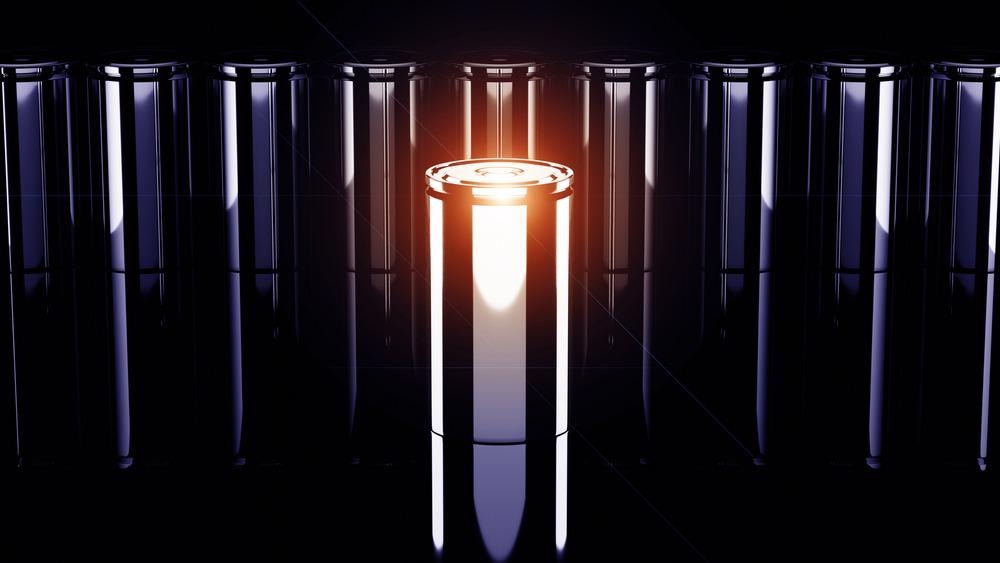 By Surbhi JainReviewed by Susha Cheriyedath, M.Sc.Mar 15 2022
By Surbhi JainReviewed by Susha Cheriyedath, M.Sc.Mar 15 2022In an article recently published in the journal Carbon, researchers discussed the development of a flexible current collector made from waste cotton cloth with improved electrical characteristics as well as its application for high-performance lithium (Li)–sulfur batteries.

Study: Waste cotton cloth derived flexible current collector with optimized electrical properties for high performance lithium–sulfur batteries. Image Credit: P5h/Shutterstock.com
Background
The desire for energy storage devices with commendable energy densities to replace current Li-ion battery technology has risen dramatically in recent years. The current Li-ion battery technology is considered the most reliable source of renewable energy systems, but its low energy density is insufficient for demanding applications such as next-generation electronic devices and electric vehicles.
Because of its non-toxicity, economic practicality, and accessible resources, sulfur-based battery (LSB) technology has piqued the scientific community's interest among the various electrochemical options. However, inherent barriers like sulfur's weak electronic conductivity and microstructural volume changes in the cathode caused by electrochemical processes result in inefficient sulfur use and poor cycling ability.
Because the shuttle effect arises from the cathode, tremendous effort has been put into the cathode side of LSB. On the cathode side of most LSBs, an aluminum current collector accounts for the majority of the electrode weight. As a result, the clever design of current collectors with appropriate features is critical to fully exploiting the potential of LSB.
About the Study
In the present study, the authors presented the utility of LSB to modify the electrical characteristics of a carbon fabric made from discarded cotton by appropriately setting the carbonization temperature.
The team described the usage of carbon cloth as a lightweight, flexible 3D current collector with a large specific surface area and percolating fibrous network for quicker electron transport. The impact of carbonization temperature on the qualities of carbon cloth made from the waste cotton cloth was also investigated.
The movement of the active ingredients through the carbon cloth's 3D hierarchical framework to the bulk was illustrated. The impact of current collector parameters on LSB performance was extensively investigated, and the formation of improved interfacial contacts between the substrate and the active material, which also serves as a volume buffer, was demonstrated. Furthermore, the impact of carbonization temperature on the corresponding electrical resistance of the carbon fabric was determined.
The researchers demonstrated the impact of the synergistic effect of good contact and quick electron transport on the usage of sulfur. Additionally, the role of interior void volume between interwoven fibers in the electrolyte uptake and on the shortening ion diffusion pathways was evaluated.
Observations
At a 0.1C rate, LSB had a high initial discharge capacity of 1171 mA h g-1. An LSB cell with a second layer as an upper collector between the cathode and the separator had a high initial capacity of 592 mA h g-1 and preserved 81.2% of the initial capacity after 500 cycles.
More from AZoM: What is Femtosecond Laser-Based 3D Printing?
When the carbonization temperature was increased to 1100 °C, the crystallite size values increased. The electrical resistance of the CC800 was calculated to be 29.20 Ω, whereas the resistance of the CC1100 was calculated to be 15.85 Ω. Initial discharge capacities of 745, 619, 563, and 499 mA h g-1 were observed for LSB cells with aluminum current collectors at 0.1 C, 0.2 C, 0.5 C, and 1 C rates, respectively. Furthermore, the achieved capacities for LSB with CC1100 were 924.0, 819.2, 678.4, 588.0 mA h g-1.
After 100 cycles, the CC1300 cell had a capacity of 922.07 mA h g-1, and the capacities of the CC800 and CC110 were found to be 574.14 mA h g-1 and 646.96 mA h g-1, respectively. Additionally, an initial discharge capacity of 620 mA h g-1 was achieved for the Al collector.
The initial discharge capacity of the aluminum collector was calculated to be 112 mA h g-1. The cell with a top collector retained a capacity of 118 mA h g-1 even after 180 cycles. The LSB cell's energy density was calculated to be 355 W h Kg-1. At an even quicker rate of 0.5 C, the cell with the upper current collector showed remarkable performance, with a high initial discharge capacity of 895 mA h g-1 and capacity retention of 88.2% after 180 cycles and Coulombic efficiency of 99%.
Conclusions
In conclusion, this study determined the optimum temperature for carbonization to improve the microstructural and electrical properties of waste cotton cloth as a low-cost precursor for the preparation of carbon cloth. It was confirmed that lowering the substrate's electrical resistance is a crucial factor influencing sulfur usage. Furthermore, the interwoven woven network with sufficient blank spaces enhances electrolyte uptake and Li-ion diffusion, which is a significant difficulty with typical aluminum current collectors.
The authors observed that the functionalization of such a flexible substrate with appropriate catalysts will help LSB perform better at larger sulfur loadings. They also believe that the structural robustness and flexibility of this carbon fabric can pave the way for the next generation of flexible and wearable energy storage devices to be developed.
Disclaimer: The views expressed here are those of the author expressed in their private capacity and do not necessarily represent the views of AZoM.com Limited T/A AZoNetwork the owner and operator of this website. This disclaimer forms part of the Terms and conditions of use of this website.
Source:
Joshi, A., Raulo, A., Bandyopadhyay, S., Waste cotton cloth derived flexible current collector with optimized electrical properties for high performance lithium–sulfur batteries. Carbon (2022). https://www.sciencedirect.com/science/article/abs/pii/S0008622322001890